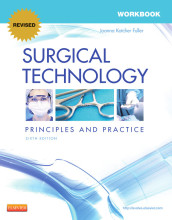Moving, Handling, and Positioning
42 important questions on Moving, Handling, and Positioning
The _____ position is a type of prone position in which the patient lies on his or her abdomen with the hips flexed into an inverted "V" position.
Injury that results when two tissue planes are pulled in opposite directions is called
Injuries are reduced when health care providers use ?
- Higher grades + faster learning
- Never study anything twice
- 100% sure, 100% understanding
To assist the patient when falling
______ must be lower than the patient's body at all times.
______ must be higher than the patient's body.
Patients often want to "help" during transport. It is important for their safety that they are instructed to _____ when being transported.
When passing through manually operated doors while transporting a patient ____
If an emergency occurs while you are in the elevator transporting a patient, you should?
______ is the best option to transfer an unconscious patient
Caregivers may accompany _____ patient to the surgical suite and stay through anesthesia induction
The developmental age of the ____ is critical for communication to be effective
______ position drops the viscera into the lower abdominal cavity, which allows a clear view of the diaphragm, cardiac sphincter, and esophagus.
The arm board is used during surgery to extend the arms away from the body at an angle under ?
Sequential compression devices (SCD) are used on patients having surgery to prevent
When lowering the patient's legs from the stirrups postoperatively, they are lowered _____.
If a patient is in the reverse Trendelenburg position, sliding downward may cause an
The surgical team may begin positioning the patient only after the ______ gives his or her permission.
The _____ position, or foot down position, is used when the surgeon requires unobstructed access to the upper abdominal cavity and lower esophagus.
Lying with the abdomen downward, the patient is in the _____ position.
A sitting position used for cranial and facial procedures is called the _____ position.
If using " candy cane" attachments, the patient will be in the ____ position.
A safety strap should be placed _______
_____ people should be present during the transfer of a mobile and alert patient
A _____, disoriented, or pediatric patient may attempt to climb out of the gurney or climb out of the crib and become entangled in side rails or climb over them and fall.
Position a morbidly obese patient on a _____ surgical table.
When moving a patient, keep feet ____ to provide support
Severe swelling and tissue injury caused by constriction of the blood and lymph is called ?
Loss of blood supply to a body part either by compression or as a result of a blockage in the blood vessel.
The normal anatomical movement of an extremity
A surgical treatment for compartment syndrome in which the fascia is incised to release severe tissue swelling
Tissue injury caused by continuous pressure over an area is called?
A clot of blood, air, organic material, or a foreign body that moves freely in the vascular system is called?
Flexion of a joint beyond its normal anatomical range is called?
Wheels on bed, wheelchair, or stretcher are locked is safe patient ?
Always warn the patient of bumps or other unfamiliar movement. This is safe patient?
Cover patient, apply safety strap, and raise rails. This is safe patient?
Knowing ahead of time what the surgical procedure will require is safe patient
Requires the use of adequate padding, safety strap, and adequate help is safe patient?
Requires verifying the patient's identity first is safe patient?
Never move any part of the body against resistance is safe patient?
Untangle and move lines, tubes, and equipment first, then the patient is safe patient?
The question on the page originate from the summary of the following study material:
- A unique study and practice tool
- Never study anything twice again
- Get the grades you hope for
- 100% sure, 100% understanding
































